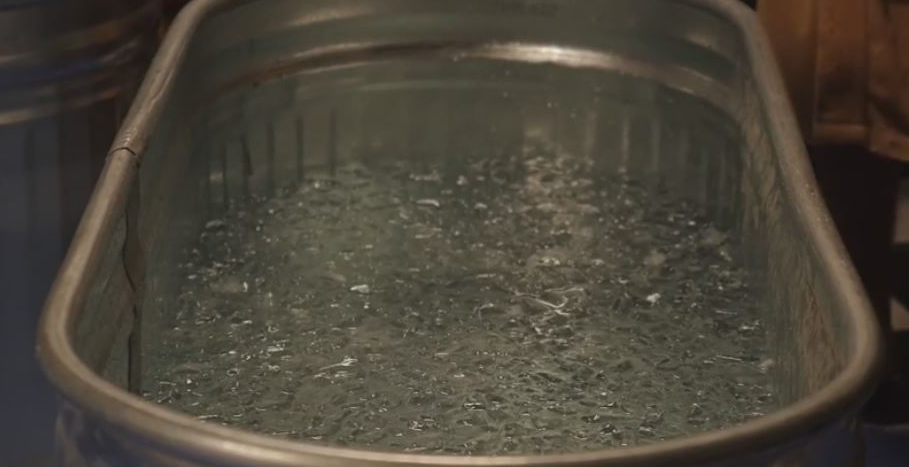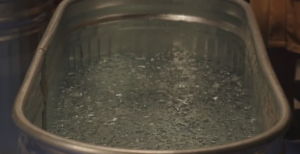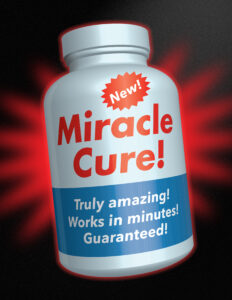
Cryotherapy and Exercise Recovery: Part 2
Today’s guest post is the second installment in a series on cryotherapy from Tavis Bruce. In case you missed Part 1, you can check it out HERE. -EC
In Part 1 of this two-part series on cryotherapy, I summarized the literature to-date on the short- and long-term effects of post-exercise cryotherapy.
To briefly recap:
• Cryotherapy, particularly cold water immersion (CWI) seems to reduce perceptions of fatigue and muscle soreness and increase perceptions of recovery which may benefit performance in the short-term.
• However, chronic use of cryotherapy is contraindicated due to the detrimental effects on long-term training adaptations.
Today, in Part 2, I’m going to discuss more of the practical side of cryotherapy—basically, how to make the most of it, if and when you choose to use it.
But first, I thought I would discuss some baseball-specific research that may be of interest to the baseball players and coaches out there who are reading this article.
Should Pitchers Ice?
As a pitcher, my relationship with ice is definitely what I would describe as hot n’ cold (pun intended). When I was younger, slapping an ice pack on my arm was somewhat of a post-game ritual. But, by the time I got to college, I found myself questioning how much icing my arm actually “helped”. I eventually stopped icing altogether, save maybe a few times when I was particularly sore. Suffice to say, I’ve always been curious what the research had to say about icing after throwing, so I was pretty stoked to find a few studies that looked at exactly that. (If you don’t care about baseball, go ahead and skip to the next section.)
In a study of “highly skilled”* amateur baseball players, Yanagisawa et al. found that light shoulder exercise (20 minutes on an arm ergometer at a low-intensity) was more effective than ice at restoring internal and external shoulder strength and range of motion (ROM) 24 hours after a 7-inning, 98-pitch simulated outing (38,89). However, improvements in shoulder strength, ROM, and muscle soreness were greatest when ice and light shoulder exercise were combined. These results indicate that active recovery (such as light shoulder exercise) may be an effective recovery strategy between pitching appearances, and that ice may provide some additional benefits, particularly relating to the management of delayed-onset muscle soreness (DOMS) in the throwing shoulder after pitching.
*The participants were college-aged, but the authors did not explicitly state if they were college or recreational baseball players, nor did they state average velocities.
Two studies (90,91) looked at the effects of icing the throwing arm between innings of a simulated game. Interestingly, both studies found that pitchers’ velocities dropped off less when they iced their throwing arms between innings compared to when they didn’t. In addition, icing between innings decreased perceived exertion and increased perceived recovery (91) as well as increased the number of innings and the total number of pitches pitchers threw when pitchers threw to volitional fatigue (90).
While these findings are intriguing, I wouldn’t go icing my arm between innings just yet. It’s certainly possible that cooling the pitchers’ throwing arms modified perceptions of effort and fatigue in a way that allowed for a greater output as the game went on. But, as I alluded to earlier in this article, cooling can disrupt both neuromuscular drive as well as proprioceptive feedback from the arm, both of which have important implications for throwing a baseball fast, accurately, and (perhaps) “safely”. This may be less problematic in low velocity pitchers (with an average fastball of about 70 miles per hour, the pitchers in these two studies weren’t exactly lighting up the radar gun!) but we have no idea how pitchers with elite-level fastball velocities would respond to this kind of protocol.
There is no direct evidence that suggests that ice is detrimental to pitching performance. In particular, ice combined with active recovery strategies such as light shoulder exercise may help reduce DOMS and restore shoulder strength and range of motion between pitching appearances. However, these findings need to be interpreted with caution as the effect of icing after throwing in the elite-level pitcher has not been quantified nor are there any longitudinal studies assessing the long-term effects of icing after throwing on functional or morphological adaptations to a comprehensive, periodized throwing program. Given the detrimental effects of CWI on resistance training adaptations, regular icing of the shoulder is not recommended in the off-season.
Does Cooling Method Matter?
It turns out that how you choose to cool down after exercise may be important. A 2013 meta-analysis by Poppendieck et al. found that CWI was more effective than ice packs and cryogenic chambers for performance recovery in trained athletes (92). This findings may be biased due to the large majority of studies that use CWI as their cooling intervention but there’s a reason for this: CWI is by far the most effective method for cooling the body (93) and, as such, it has become the gold standard in both research and athletic settings.

Whole-body cold water immersion also appears to be more effective than cooling only the exercised limb(s) (92). This may be due to a greater reduction in core temperature with whole body cooling than with partial-body cooling (94) in addition to the (potentially) therapeutic effects of hydrostatic pressure experienced during water immersion10. If CWI isn’t available, compression wraps can enhance the intramuscular cooling effects of ice packs (95,96) in addition to providing a compression effect (albeit to a far lesser degree than water immersion), although it’s not quite clear what effect (if any) this might have on recovery.
Whole body CWI is not only the most effective way to cool the body, it may also have the greatest therapeutic benefit, due to the temperature-independent effects of water immersion.
Is There an Optimal Temperature or Duration?
There is no definitive evidence on an “optimal” temperature or duration for cryotherapy; however, the available research provides some insight.
In their meta-analysis, Poppendieck et al. concluded that water temperatures of 12-15ᵒC are sufficient to elicit positive effects on post-exercise recovery in trained athletes and that cooler temperatures are not likely to produce any additional benefit (92).
As for duration, 10 minutes of whole body CWI at 12-15ᵒC is more than enough to elicit a reduction in intramuscular temperature (93) and 20 minutes seems to be the upper limit of what is used in the literature (with the exception of warmer immersions, of course). Logically, the less body mass that is exposed to cold, the longer the exposure needs to be to elicit a similar reduction in core body temperature (94). Similarly, colder temperatures require shorter exposures (97).
Further evidence suggests that CWI for longer durations (30 minutes) may exacerbate the inflammatory response to exercise (64) and there are several documented cases of peripheral nerve injury when ice packs are left on for too long (98,99). Don’t be the guy that falls asleep with an ice pack on!
A 10-minute, whole body immersion at 12-15ᵒC is more than enough to reap the benefits of CWI. Cooler temperatures or longer durations are unnecessary and potentially harmful, so always be sure to err on the side of caution.
What About Placebo Effects?
Despite the placebo effect being well-documented in sports (see Beedie et al. [100] for review), there hasn’t really been an attempt to quantify its role in the positive outcomes we (sometimes) see with cryotherapy. Sugar pills are one thing, but it’s not exactly easy to convince someone they’re taking an ice bath—without actually having them take an ice bath! So, when Broatch et al. published their placebo study in 2014 there was a lot of hype on the internets. And for good reason: it was the first study that compared CWI to, what I consider to be, a pretty decent shot at a placebo condition.

In the study, participants in the placebo group performed 15 minutes of thermoneutral immersion but were led to believe it contained a special “recovery oil” that was just as effective as CWI. And the results were pretty compelling: the thermoneutral placebo was just as effective as CWI at restoring quadriceps strength (MVC) up to 48 hours post-exercise and both groups recovered significantly better than the thermoneutral control group. In addition, both the CWI and the thermoneutral placebo group reported similar subjective ratings of recovery.
Now, we can’t generalize these results to all scenarios because the study looked at recovery of quadriceps strength following four 30-second maximal sprints on a cycle ergometer. We have no idea to what extent placebo effects are involved in recovery from, say, resistance training, endurance exercise, or team sports. I think it’s pretty safe to say they likely play a role, though.
So how do we interpret these results?
Well, we could throw the ice out with bathwater. After all, cold water immersion is no better than placebo, right? But I don’t think that’s necessary. As a coach, I think it’s always important to consider the preferences of your athletes. And I think this study supports the use of CWI with athletes who believe it to have a recovery benefit (e.g., Cook & Beaven found that repeat sprint performance following CWI was related to how much athletes “liked” it [67]). Said differently, there’s not enough solid evidence to encourage your athletes to use CWI, but I see no reason to discourage an athlete who sees value in it either.
This last point comes with one major caveat: as long as an athlete’s use of CWI does not impede on your training goals for that athlete. In this sense, it may be valuable to educate athletes who regularly use CWI on its potentially detrimental effects on long-term training adaptations and explain to them it is best used sparingly throughout the competitive season.
Placebo effects almost certainly play a role in the recovery benefits of cryotherapy, but it’s not clear to what extent. Coaches should pay attention to the preferences of their athletes, and not necessarily discourage an athlete who perceives cryotherapy to be beneficial from using it sparingly, and in a manner that is congruent with their training goals.
Practical Recommendations
If you’re an athlete (or if you coach an athlete) that likes using ice or ice baths for recovery, that’s great! Keep doing what you’re doing. But to make the most of it, I suggest you following my recommendations below:
• Use ice baths over ice packs or other forms of local cooling whenever possible.
• Make sure the water temperature is between 10-15 degrees Celsius but not any colder. Colder does not mean better. Warmer temperatures (up to 20 degrees Celsius) for longer durations can also be used.
• Ice baths should last between 5-15 minutes. The colder the water, the shorter the ice bath should be.
• Submerge your whole body (up to your neck/shoulders), or as much of your body as you can.
• After the ice bath, allow time for rewarming and ensure an adequate warm-up before your next game, event, or training session. Avoid using ice baths immediately (<1 hour) prior to exercise, particularly before training or events involving high-intensity or explosive efforts such as sprinting, jumping, or weightlifting. The exception to this rule would be if you’re competing in an endurance event in warm or hot weather. In this case, precooling may enhance subsequent performance.
• Use ice baths sparingly. Regular ice baths kill strength and muscle mass gains! They’re best saved for strategic use during the competitive season when you’re trying to recover performance within a few hours to a few days.
• Important: Be careful! Cryotherapy does not come without its dangers. Exposing your body to cold temperatures for too long can have potentially dangerous effects. (E.g., don’t fall asleep with an ice pack on your shoulder. I used to do this. It’s moronic!) Set yourself a timer and stick to it. And if things start to feel sketchy before the timer goes off, call it quits!
Note: the references for this entire article will be posted as the first comment below.
About the Author
A native of the Great White North, Tavis Bruce (@TavisBruce) is no stranger to the effects of cold on athletic performance. He holds a Bachelor of Kinesiology and Health Science from the University of British Columbia, where he pitched for the Thunderbirds baseball team for three seasons. Tavis is currently the Director of Education for the Baseball Performance Group, where he integrates his passion for sports science with his love of baseball. He can be contacted at tavis.bru@gmail.com.




